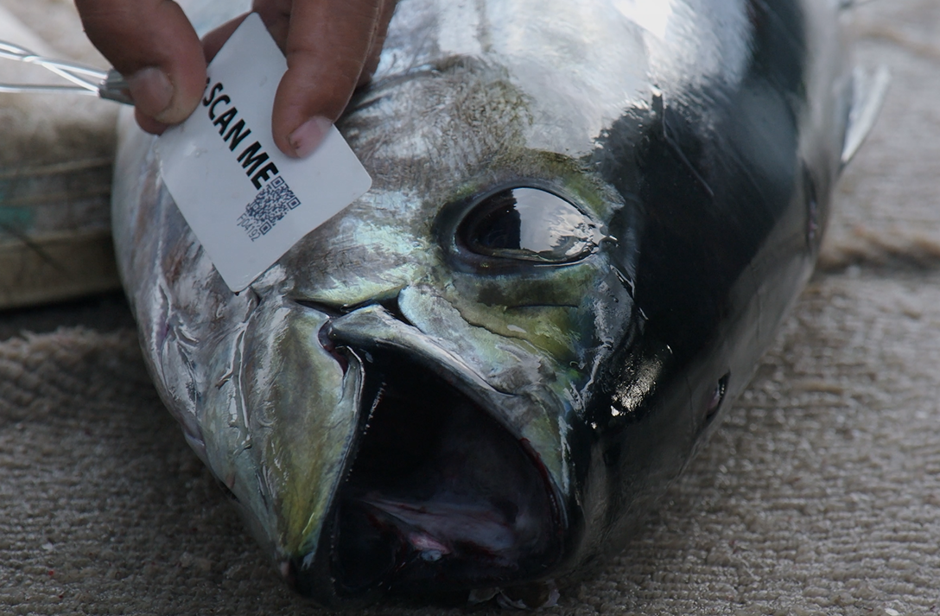By empowering consumers to make more sustainable choices in the fish they buy, the impact for biodiversity in the oceans could be profound, reports Angeli Mehta
How do you know that the fish on your plate is sustainably caught when you can’t even be sure it is the species advertised on the label?
In 2013, genetic testing by oceans conservation group Oceana found 44% of 1,200 seafood samples collected from grocery stores, restaurants and sushi venues in 21 US states had been miss-labelled.
Oceana pointed out that given the fact that a fish caught in one part of the globe might change hands dozens of times and undergo multiple forms of processing and packaging, it’s impossible to know where in the supply chain the seafood fraud had actually taken place.
By empowering consumers to make more sustainable choices, the impact on oceans could be profound
According to the conservation group WWF, blockchain technology is the solution to such opacity, a tamper-proof digital ledger that can guarantee provenance by verifying the accuracy of every step from boat to supermarket shelf.
Since January 2019, Perth-based Austral Fisheries, one of Australia’s largest fishing companies, has been using blockchain technology developed by WWF through its OpenSC joint venture with Boston Consulting Group Digital Ventures to guarantee the provenance of high-value Patagonian toothfish, caught in sub-Antarctic waters, which it supplies to 13 countries around the world.
Bubba Cook, western and central Pacific tuna programme manager with WWF, explained that WWF and its technology partners initially trialled blockchain with SeaQuest, an ethical long-line tuna fishery based in Fiji.

A re-usable radio frequency identification (RFID) tag was attached to each fish after it was caught, and information like type of fish and weight was uploaded via an app.
The tag follows the fish from catch to processing facility onshore, with all the relevant data on the fishing vessel and catch location following it. When the fish is packaged the tag is swapped for a QR code that can then be used to track the fish all the way to consumer, who then has the story of the journey of their piece of fish.
By empowering consumers to make more sustainable choices in the fish they buy, the impact for biodiversity in the oceans could be profound, Cook said.
If you give the Costcos and Tescos the ability to select products from verified sources, you can really steer behaviour
He pointed to yellowfin tuna, which is heavily overfished in the Indian Ocean; but fares better in the Pacific.
“If you can get just to that level of granularity where you can say, ‘we're not going to buy from the Indian Ocean’, you've already created the incentive to source from those fisheries that are managed sustainably and punish those fisheries that aren't, so that they take more urgent actions to address the sustainability issues in those regions,” Cook said.
But while other seafood industry players are piloting the technology on products from scallops to farmed salmon, there needs to be a big increase in demand from major seafood players to take its use to scale.

“[It’s] going to require a concerted push from all of the markets to collectively come together and say: we want this level of transparency, we need this level of transparency and we're ready to invest in it,” suggests Cook.
“If you give the Costcos and the Tescos and others around the world the ability to … select products that come from verified and trustworthy sources that don't engage in environmental harm and human rights violations, then that can really steer behaviour on the water a lot faster than regulatory requirements.”
He adds: “It has the potential to change the world.”
This article is part of our in-depth briefing, Sustainable oceans. See also:
Time is rapidly running out to save oceans
Can sustainable aquaculture feed the world?
Big data employed to increase traceability in bid to to save the big blue sea
ESG investors slow to make waves in the $2.5tn ocean economy
Fashion ‘slow to act on ocean plastic pollution from microfibres’
Soaring growth in offshore renewables puts wind in the sails of the energy transition

